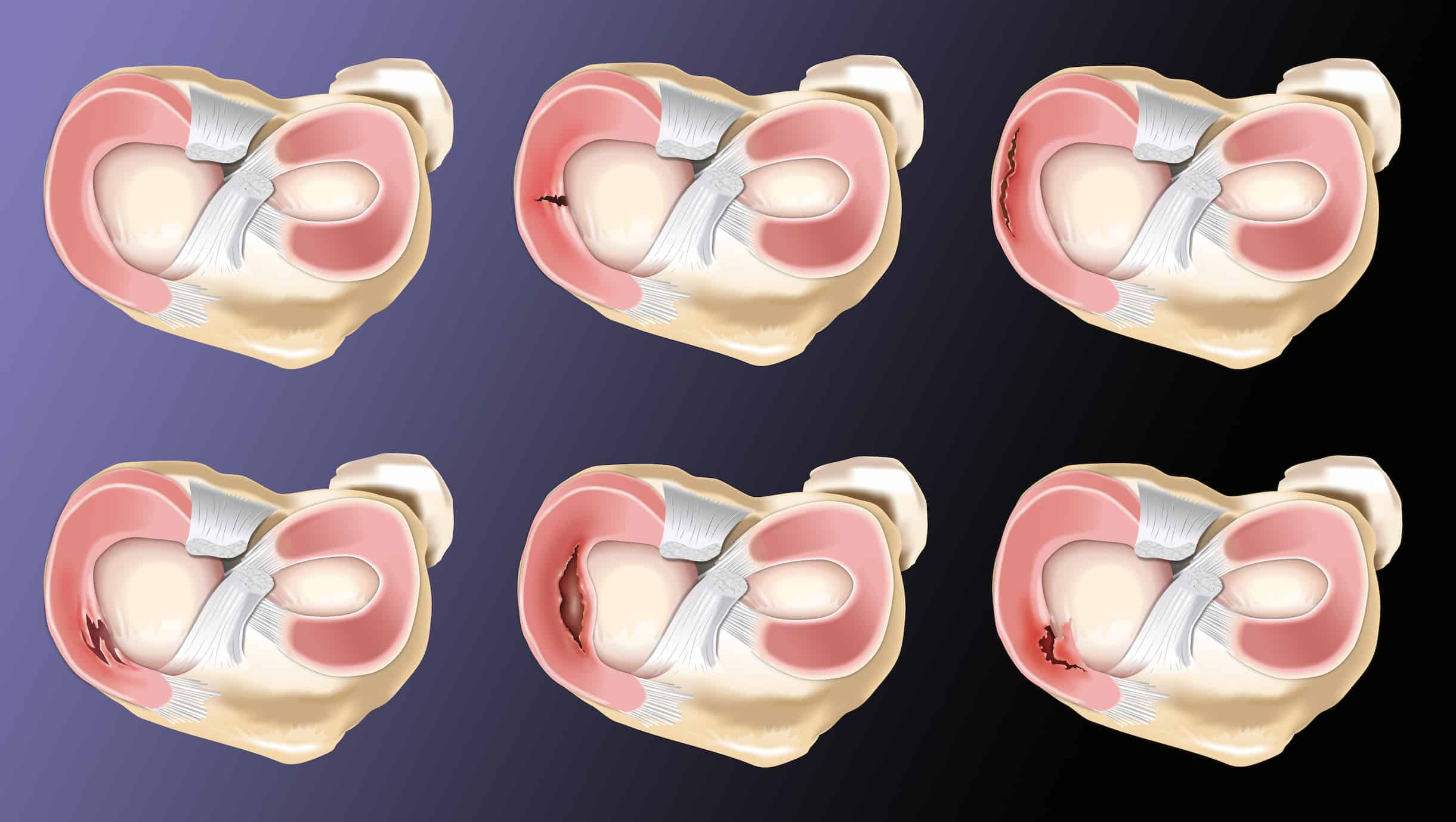
Meniscectomy vs. Meniscus Repair
Injuries to the knee joint are common, and one of the most common types of knee injuries is damage to the meniscus. The meniscus is a C-shaped piece of cartilage that cushions the knee joint, and it can be injured in a variety of ways, including twisting, turning, or other sudden movements. Meniscal injuries can be painful and limit the range of motion in the knee, making it difficult to perform everyday activities or participate in sports.
When a meniscal injury occurs, there are two main treatment options: meniscectomy and meniscus repair. Both procedures are designed to address meniscal injuries, but they are quite different in terms of their approach and their long-term effects on the knee joint. In this article, we’ll take a closer look at the differences between meniscectomy and meniscus repair, and what you can expect from each procedure.
Should You Have Your Meniscus Repaired or Removed? Examining the Differences in Long-Term Results
An article that was published in 2019 compared the outcomes (at a mean of 6.2 years after the intervention) of 15 patients who received non-operative management, 15 patients who underwent a partial meniscectomy, and 15 patients who underwent a meniscus root repair. All of the patients were treated for a torn meniscus in their knee.
To evaluate patient outcomes, osteoarthritic development was studied, patients who needed a second total knee arthroplasty were identified, and knee outcome scores were determined based on patients’ subjective experiences. Because this was a retrospective review, there was no randomization of the three groups. Hence, the results may not be comparable. The severity of the tear, as well as the health of the meniscal tissue, was taken into consideration when devising a treatment plan. According to the findings of this study: In the group that underwent meniscal repair, there were significantly fewer patients who required a complete knee arthroplasty and significantly less evidence of the progression of osteoarthritis.
At a mean follow-up of 74 months, total knee arthroplasty was required for forty percent of the patients in the partial meniscectomy group, twenty-seven percent of the patients in the conservatively managed group, and none of the patients in the meniscal repair group. The subjective knee result scores of the three therapy groups were compared, and there was found to be no significant difference between them. A meta-analysis was performed in a different study that was published in the research. This meta-analysis compared meniscectomy vs meniscus repair.
In this analysis, for the difference between meniscectomy and meniscus repair, 355 patients participated (229 were treated with a meniscus root repair, 74 underwent a medial meniscectomy, and 41 were managed conservatively). The researchers that authored this study looked into the course of osteoarthritis, as well as the cost-effectiveness and frequency of complete knee replacements.

Meniscectomy in Turkey
Meniscectomy is a surgical procedure in which part or all of the meniscus is removed. This procedure is typically performed when the meniscal tear is too large or too complex to be repaired. During a meniscectomy, the surgeon will make a small incision in the knee and insert a tiny camera called an arthroscope to visualize the damaged meniscus. The surgeon will then use surgical instruments to remove the damaged tissue.
Meniscectomy is a relatively simple and minimally invasive procedure that can be performed on an outpatient basis. Patients can typically return home the same day as the surgery, and recovery time is relatively short. However, meniscectomy does have some long-term drawbacks. Removing part or all of the meniscus can increase the risk of developing osteoarthritis in the knee joint, as the meniscus plays an important role in cushioning and stabilizing the joint. As a result, meniscectomy is typically only recommended for older patients or those with degenerative meniscal tears.
Meniscus Repair in Turkey
Meniscus repair is a surgical procedure in which the damaged meniscus is repaired rather than removed. This procedure is typically performed on younger patients or those with small, peripheral tears that can be repaired. During a meniscus repair surgery, the surgeon will make a small incision in the knee and insert an arthroscope to visualize the tear. The surgeon will then use sutures or other devices to repair the tear and stabilize the meniscus.
Meniscus repair is a more complex and invasive procedure than meniscectomy, and it requires a longer recovery period when it is compared with meniscectomy vs meniscus repair. Patients may need to wear a knee brace or use crutches for several weeks after the surgery, and they will need to undergo physical therapy to regain strength and flexibility in the knee. However, meniscus repair has several long-term benefits over meniscectomy. By preserving the meniscus, meniscus repair can help maintain the integrity and stability of the knee joint, reducing the risk of developing osteoarthritis in the future. It can also help patients maintain their mobility and quality of life over the long term.
The Study of Meniscectomy vs Meniscus Repair
In a notable 2019 study published in the Journal of Orthopedic Research and Treatment, researchers conducted a comparative analysis of the long-term outcomes, spanning approximately 6.2 years, for patients undergoing non-operative management, partial meniscectomy, and meniscus root repair for torn meniscus in the knee. The retrospective review involved 15 patients in each group, and the results indicated a significantly lower incidence of total knee arthroplasty and reduced evidence of osteoarthritis progression in the meniscus repair group compared to the partial meniscectomy group. This study contributes valuable insights into the efficacy of different treatment modalities, informing orthopedic specialists on the potential benefits of meniscus repair in mitigating long-term knee joint complications.
Difference Between Meniscectomy and Meniscus Repair
If you have a meniscal tear, it’s important to consult with an orthopedic specialist to determine the best treatment option for your specific needs. Meniscectomy and meniscus repair are both effective treatments for meniscal injuries, but they have different approaches and long-term effects on the knee joint. Meniscectomy is a simpler and less invasive procedure, but it carries a higher risk of osteoarthritis and is typically only recommended for older patients or those with degenerative meniscal tears.
Meniscus repair is a more complex and invasive procedure when we compare meniscectomy vs meniscus repair, but it offers several long-term benefits, including maintaining the stability of the knee joint and reducing the risk of developing osteoarthritis. Your orthopedic specialist will evaluate the size and location of your meniscal tear, as well as your age, activity level, and overall health, to determine the most appropriate treatment option for you.
It’s also important to note that not all meniscal tears require surgical intervention. In some cases, conservative treatments such as rest, ice, compression, and elevation (RICE), as well as physical therapy and pain management, may be sufficient to alleviate symptoms and promote healing. Your orthopedic specialist can help you determine the best course of treatment which is meniscectomy vs meniscus repair based on the severity of your injury and your individual needs.
Healthy Türkiye Notes
In summary, meniscectomy and meniscus repair are two common treatments for meniscal injuries. While both procedures are effective in treating meniscal tears, they have different approaches and long-term effects on the knee joint. Meniscectomy is a simpler and less invasive procedure, but it carries a higher risk of osteoarthritis and is typically recommended for older patients or those with degenerative meniscal tears. Meniscus repair is a more complex and invasive procedure, but it offers several long-term benefits, including maintaining the stability of the knee joint and reducing the risk of developing osteoarthritis. Consult with an orthopedic specialist to determine the most appropriate treatment option for your specific needs.



